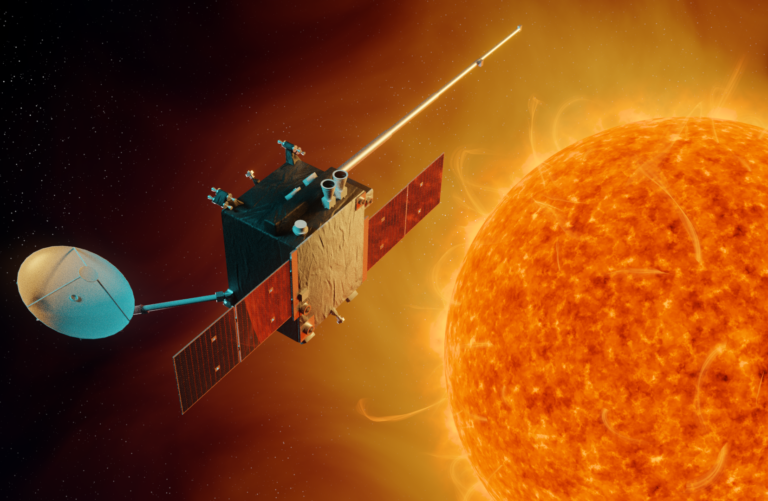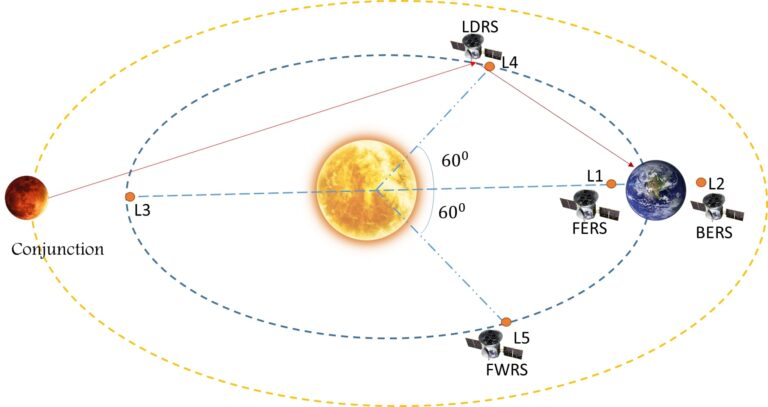Introduction: Aditya-L1’s PAPA Payload
Space, with its vastness and mysteries, constantly presents challenges and opportunities for exploration. One such endeavor, the Aditya-L1 mission by the Indian Space Research Organisation (ISRO), aims to deepen our understanding of the Sun and its impact on space weather. At the heart of this mission lies the Plasma Analyser Package for Aditya (PAPA) payload, a sophisticated instrument that plays a pivotal role in monitoring space weather conditions.

PAPA's Journey: Monitoring Space Weather with Precision
The PAPA payload onboard Aditya-L1 has been operational and performing nominally since its deployment. Its advanced sensors have demonstrated their efficacy by successfully detecting the impact of coronal mass ejections (CMEs), including those occurring during the notable events of February 10-11, 2024. This achievement underscores PAPA’s pivotal role in understanding and predicting space weather phenomena.
Understanding PAPA: Unveiling the Plasma Analyser
The Plasma Analyser Package for Aditya (PAPA) is an innovative energy and mass analyzer designed for in-situ measurements of solar wind electrons and ions within the low energy range. It comprises two primary sensors: the Solar Wind Electron Energy Probe (SWEEP) and the Solar Wind Ion Composition Analyser (SWICAR).
SWEEP is responsible for measuring electrons in the energy range of 10 eV to 3 keV, providing crucial insights into the behavior and dynamics of these charged particles. On the other hand, SWICAR focuses on analyzing ions within the energy range of 10 eV to 25 keV and the mass range of 1-60 atomic mass units (amu). Together, these sensors offer a comprehensive view of the composition and characteristics of the solar wind.
How PAPA's Sensors Work: Delving into the Mechanisms
SWEEP and SWICAR employ sophisticated techniques to gather data on solar wind particles. SWEEP utilizes its electron energy probe to measure the energies of incoming electrons, providing valuable information about their distribution and dynamics. Meanwhile, SWICAR employs mass spectrometry principles to analyze the composition of ions, enabling researchers to identify the types and abundances of different ion species present in the solar wind.
The Directional Aspect: Navigating the Solar Wind

In addition to energy and mass measurements, PAPA’s sensors are equipped to determine the direction of arrival of solar wind particles. This directional information is crucial for understanding the spatial distribution and flow patterns of the solar wind, shedding light on its interaction with planetary magnetospheres and other celestial bodies.
Calculating Solar Wind Parameters: Behind the Scenes
Behind the scenes, PAPA utilizes various algorithms and formulas to derive key parameters of the solar wind, such as its velocity, density, and temperature. These
parameters provide vital inputs for models predicting space weather phenomena and their potential impacts on Earth and space-based assets.
Unlocking the Mysteries of Space Weather: Future Prospects
As PAPA continues its mission aboard Aditya-L1, it holds the promise of unraveling further mysteries surrounding space weather. By providing real-time data and insights into solar wind dynamics, PAPA empowers scientists to better understand and forecast space weather events, ultimately enhancing our preparedness for their potential impacts on our technology-dependent society.
In Conclusion: PAPA's Vital Role in Space Exploration
The Plasma Analyser Package for Aditya (PAPA) stands as a beacon of technological innovation and scientific advancement in the realm of space exploration. With its unparalleled capabilities in monitoring and analyzing solar wind phenomena, PAPA is poised to revolutionize our understanding of space weather dynamics and their implications for Earth and beyond. As humanity ventures further into the cosmos, instruments like PAPA will continue to serve as invaluable tools for unlocking the
mysteries of the universe.
